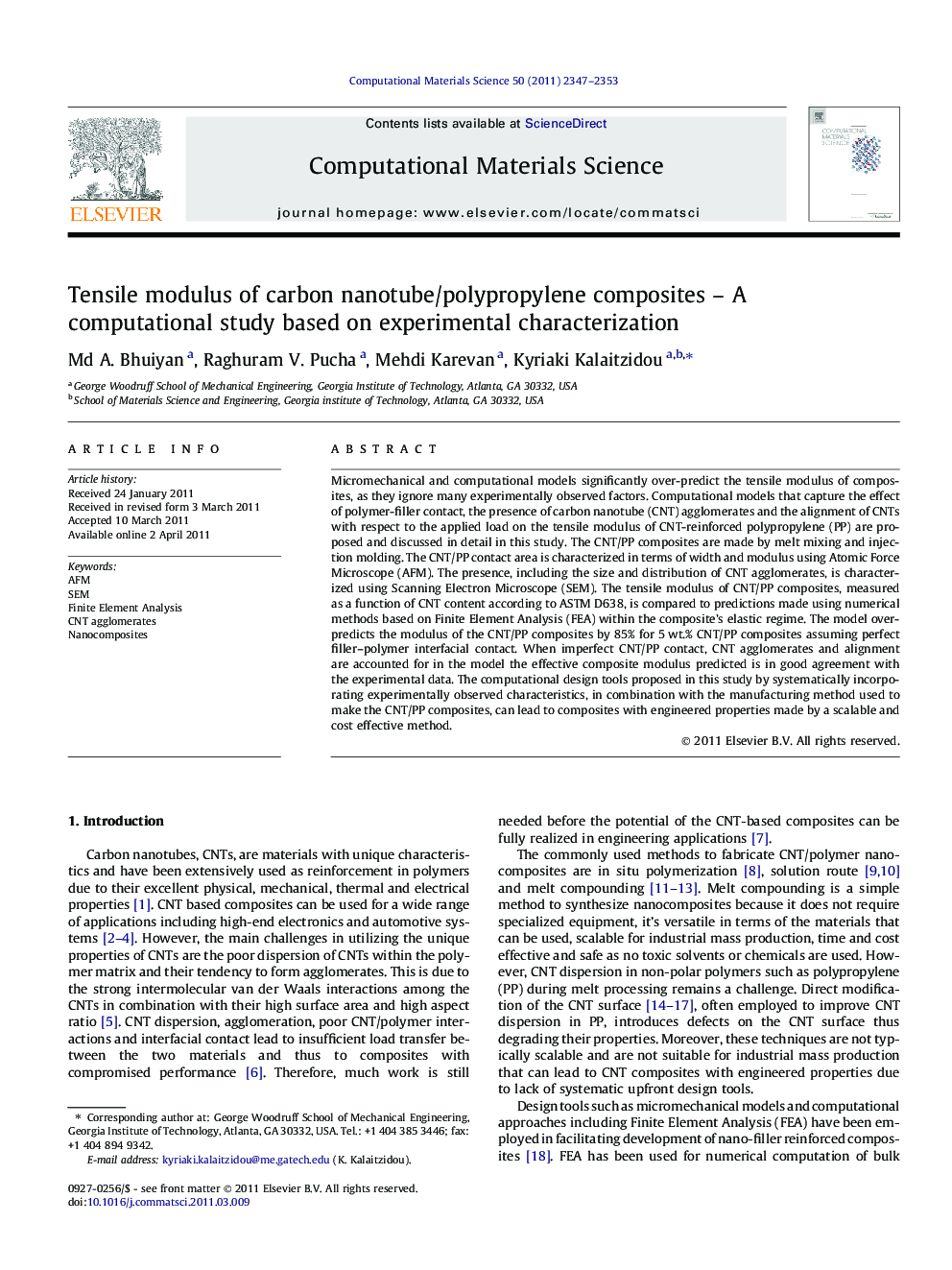| کد مقاله | کد نشریه | سال انتشار | مقاله انگلیسی | نسخه تمام متن |
|---|---|---|---|---|
| 1562188 | 999581 | 2011 | 7 صفحه PDF | دانلود رایگان |

Micromechanical and computational models significantly over-predict the tensile modulus of composites, as they ignore many experimentally observed factors. Computational models that capture the effect of polymer-filler contact, the presence of carbon nanotube (CNT) agglomerates and the alignment of CNTs with respect to the applied load on the tensile modulus of CNT-reinforced polypropylene (PP) are proposed and discussed in detail in this study. The CNT/PP composites are made by melt mixing and injection molding. The CNT/PP contact area is characterized in terms of width and modulus using Atomic Force Microscope (AFM). The presence, including the size and distribution of CNT agglomerates, is characterized using Scanning Electron Microscope (SEM). The tensile modulus of CNT/PP composites, measured as a function of CNT content according to ASTM D638, is compared to predictions made using numerical methods based on Finite Element Analysis (FEA) within the composite’s elastic regime. The model over-predicts the modulus of the CNT/PP composites by 85% for 5 wt.% CNT/PP composites assuming perfect filler–polymer interfacial contact. When imperfect CNT/PP contact, CNT agglomerates and alignment are accounted for in the model the effective composite modulus predicted is in good agreement with the experimental data. The computational design tools proposed in this study by systematically incorporating experimentally observed characteristics, in combination with the manufacturing method used to make the CNT/PP composites, can lead to composites with engineered properties made by a scalable and cost effective method.
► Melt-mixed CNT/PP composites are characterized using AFM, SEM and tensile testing.
► Numerically predicted modulus of CNT/PP is compared to experimental data.
► Numerical model of CNT/PP interphase, CNT agglomeration and alignment is proposed.
Journal: Computational Materials Science - Volume 50, Issue 8, June 2011, Pages 2347–2353